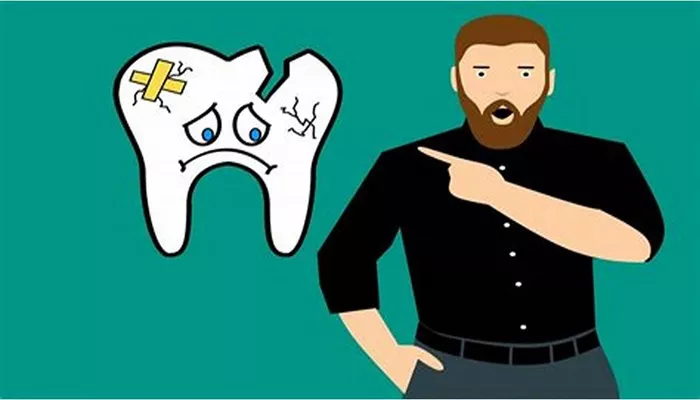Tooth decay, also known as dental caries, is a common oral health issue that affects people of all ages. It occurs when bacteria in the mouth break down sugars and starches from food and drinks, producing acids that attack tooth enamel. Over time, these acids can erode the enamel, leading to the formation of holes or cavities in the teeth. Tooth decay is not just a cosmetic concern; it can have significant effects on oral health and overall well-being. This guide aims to provide a detailed, logically structured, and scientifically grounded explanation of the effects of tooth decay, along with subtitles for clarity.
Understanding Tooth Decay
Tooth decay is a chronic disease that affects the hard tissues of the teeth, primarily the enamel and dentin. It begins when bacteria in plaque, a sticky film that constantly forms on teeth, combine with sugars and starches from food and drinks to produce acids. These acids attack the tooth enamel, gradually eroding it and creating tiny openings or pores in the surface.
If left untreated, the decay can progress deeper into the tooth, affecting the dentin and even reaching the pulp, which contains the tooth’s nerves and blood vessels.
Initial Effects of Tooth Decay
Enamel Erosion
The first visible sign of tooth decay is often the appearance of white or brown spots on the tooth surface. This discoloration occurs as the enamel begins to break down and minerals are lost. As the decay progresses, the enamel weakens and may chip or break off, leaving the tooth vulnerable to further damage.
Sensitivity
As the enamel erodes, the dentin, which is softer and more sensitive than enamel, becomes exposed. This can lead to tooth sensitivity, especially to cold, hot, sweet, or acidic foods and drinks. Sensitivity can also occur if the decay reaches the pulp, causing pain and discomfort.
Advanced Effects of Tooth Decay
Cavity Formation
As the decay continues to progress, it creates a hole or cavity in the tooth. Cavities can vary in size and severity, ranging from small pinpoint lesions to large, deep holes that compromise the tooth’s structure. Cavities can also harbor bacteria and food debris, making them difficult to clean and increasing the risk of infection.
Infection and Inflammation
If left untreated, a cavity can become infected, leading to pulpitis, an inflammation of the tooth pulp. Pulpitis can cause severe pain, swelling, and sensitivity. In severe cases, the infection can spread to the surrounding bone and tissues, causing abscesses and other complications.
Tooth Loss
Advanced tooth decay can lead to tooth loss if not treated promptly. If the decay reaches the root of the tooth, it can weaken the tooth structure and cause it to fall out. Tooth loss can have significant impacts on chewing, speaking, and overall oral health.
Long-Term Effects of Tooth Decay
Impact on Oral Health
Tooth decay can have lasting effects on oral health. It can lead to the development of other dental issues, such as gum disease, toothaches, and jaw problems. It can also affect the bite and alignment of the teeth, causing discomfort and functional issues.
Impact on Overall Health
The effects of tooth decay extend beyond the mouth. Poor oral health has been linked to a range of systemic health issues, including heart disease, diabetes, and respiratory infections. The bacteria that cause tooth decay can enter the bloodstream and contribute to inflammation and infection in other parts of the body.
Psychological and Social Effects
Tooth decay can also have psychological and social effects. The appearance of decayed teeth can affect self-esteem and confidence. It can lead to embarrassment and avoidance of social situations, affecting personal and professional relationships.
Prevention and Treatment of Tooth Decay
Good Oral Hygiene Practices
The best way to prevent tooth decay is to maintain good oral hygiene practices. Brushing teeth at least twice a day with fluoride toothpaste, flossing daily, and using an antiseptic mouthwash can help remove plaque and bacteria from the teeth and gums.
Regular Dental Check-ups
Regular dental check-ups and cleanings are essential for early detection and treatment of tooth decay. Dentists can identify and treat decay before it progresses to more severe stages, preventing damage to the teeth and gums.
Dietary Changes
Limiting the intake of sugary and starchy foods and drinks can help reduce the risk of tooth decay. Eating a balanced diet that includes plenty of fruits, vegetables, and whole grains can promote healthy teeth and gums.
Fluoride Treatments
Fluoride is a mineral that helps strengthen tooth enamel and prevent decay. Fluoride treatments, such as fluoride rinses, gels, or varnishes, can be prescribed by dentists to help protect teeth from decay.
Restorative Treatments
If tooth decay is detected, restorative treatments such as fillings, crowns, or root canal therapy can be used to repair the damage and restore the tooth’s structure and function.
Conclusion
Tooth decay is a common oral health issue that can have significant effects on oral health and overall well-being. By understanding the causes, effects, and treatments of tooth decay, individuals can take steps to prevent and manage this condition. Maintaining good oral hygiene practices, making dietary changes, and regular dental check-ups can help reduce the risk of tooth decay and promote healthy teeth and gums. Early detection and treatment of tooth decay can prevent damage to the teeth and gums and maintain overall oral health.
Related topics:

